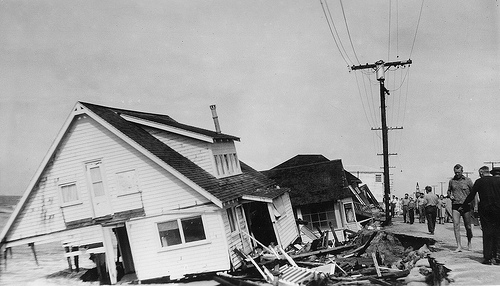California: Be Wary Of Superstorm

The 10 feet of rain possible from a superstorm, also known as the "ARkStorm Scenario," could cause extensive flooding, damaging one-fourth of the state's houses and costing more than $300 billion in damage.
"We think this event happens once every 100 or 200 years or so, which puts it in the same category as our big San Andreas earthquakes," said Lucy Jones, chief scientist of the U.S. Geological Survey Multi-Hazards Demonstration Project.
USGS scientists released the findings of their "ARkStorm Scenario" at the ARkStorm summit in Sacramento where federal and California officials met from Jan. 13-14. Data from California's flood history, flood mapping and climate-change projections were combined to produce a hypothetical storm scenario.
The ARkStorm is modeled after storms from 1861-1862 that pounded California for 45 days, "turning the Sacramento Valley into an island sea." Scientists also used data from storms in 1969 and 1986.
The New York Times reports:
Dr. [Lucy] Jones said in an interview that improved satellite imagery available in recent years allowed scientists to clearly identify what they call “atmospheric rivers” — moisture-filled air currents up to 200 miles wide and 2,000 miles long, which flow from tropical regions of the Pacific Ocean to the West Coast.
The West Coast winter weather systems popularly known as the Pineapple Express, air currents carrying moisture from the Hawaiian Islands are just one moderate subset of these rivers, Dr. Jones said. The abbreviation for atmospheric river, A.R., gave the geological survey the root of its name for these major weather events, which they call ARk storms.
Officials say the scenario will help state offiicals, emergency personnel and residents prepare for the other big one.
"The time to begin taking action is now, before a devastating natural hazard event occurs," said USGS Director Marcia McNutt. "This scenario demonstrates firsthand how science can be the foundation to help build safer communities."



